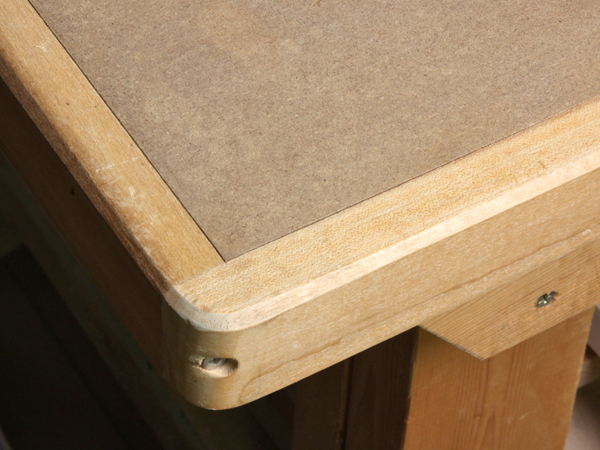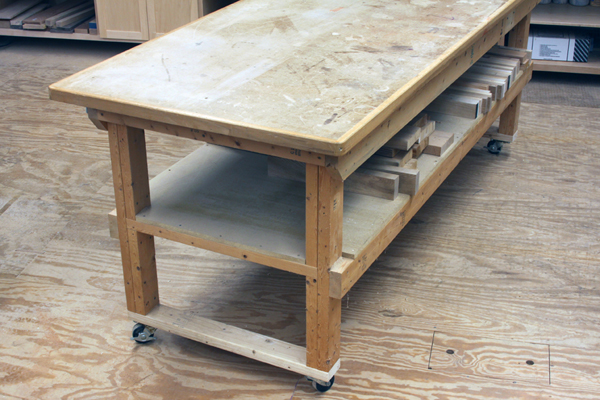
I am preparing to build a workbench and would like a properly thick top of hardwood. But I am hoping to save some money by cutting my hardwood into 1-1/2-in. strips, then gluing them together on-edge to a base of two 3/4-in. sheets of plywood, ending up with a 3-in.-thick top. My question is: Can I glue the hardwood to the plywood? Or do I have to treat the hardwood section like a tabletop and do something like screw it to the plywood through elongated holes to allow for wood movement? – Mike Garrett
Tim Inman: I’m all for extra-thick, heavy bench tops. I think I’ve mentioned in other answers that my own bench top is made from used bridge plank lumber. But your lamination idea, I think, will leave you frustrated in the end. To simplify and illustrate my thinking, this is like you’ve got both halves of the hamburger bun on one side of the hamburger. Not fatal, but not the textbook way, either. When using different materials in wood lamination glue-ups, usually the better idea is to balance the material with the idea of symmetry: each layer has a corresponding layer matching it later on. Wood moves, and you cannot stop it from happening. You can slow it down and you can equalize it, but you just simply cannot stop it using any practical way. Plywood is very dimensionally stable due to the alternating cross grain layup of the veneers. The plywood will be your most unchangeable surface. The hardwood will move differently. I like my bench to be flat! The glue-up you are suggesting, while possible, will probably be stable in the dimension of the horizontal plane, but it will be prone to warping and cupping. Given the amount of time and effort you will be spending making a great bench top, I would not save money on it. My advice would be to get the best top you can afford, and pinch pennies someplace else.
Chris Marshall: I completely agree with Tim’s logic, but I also know how expensive shop improvements like workbenches can be. So, while you won’t find this to be an attractive solution to your bench top, I’ll offer it anyway as a nod toward frugality: consider an MDF top. My first “real” woodworking bench was made with a framework of home-center 2x lumber and a doubled-up top made of 3/4-in. MDF (see below). I put a banding of 3/4-in. poplar all around its edges to hide them and improve durability (see top photo). Now, I know what you’re probably thinking: this was FAR from an attractive bench. But it was rock-solid, heavy enough to stay put and served me well for many, many years. Primarily I used it as a power tool bench, but it was big enough that I also could use it for general assembly and finishing tasks (the top was a full 4×8 ft.). The doubled-up MDF was dead flat, smooth and surprisingly durable — and at the time, I think I could buy two 4×8 sheets of it for under $40. I don’t think I spent $100 on the whole project.
Also, you may have missed it, but Rob Johnstone recently asked a question about what others have done about their workbenches. The response was interesting, and the commentary might provide you some added food for thought as you make plans. Click here to read more.
Sometimes if a shop fixture is hardworking and serves your needs, it doesn’t have to look great or be expensive to be valuable to your woodworking hobby. Good luck with your bench project — whatever you decide to do for the top!






